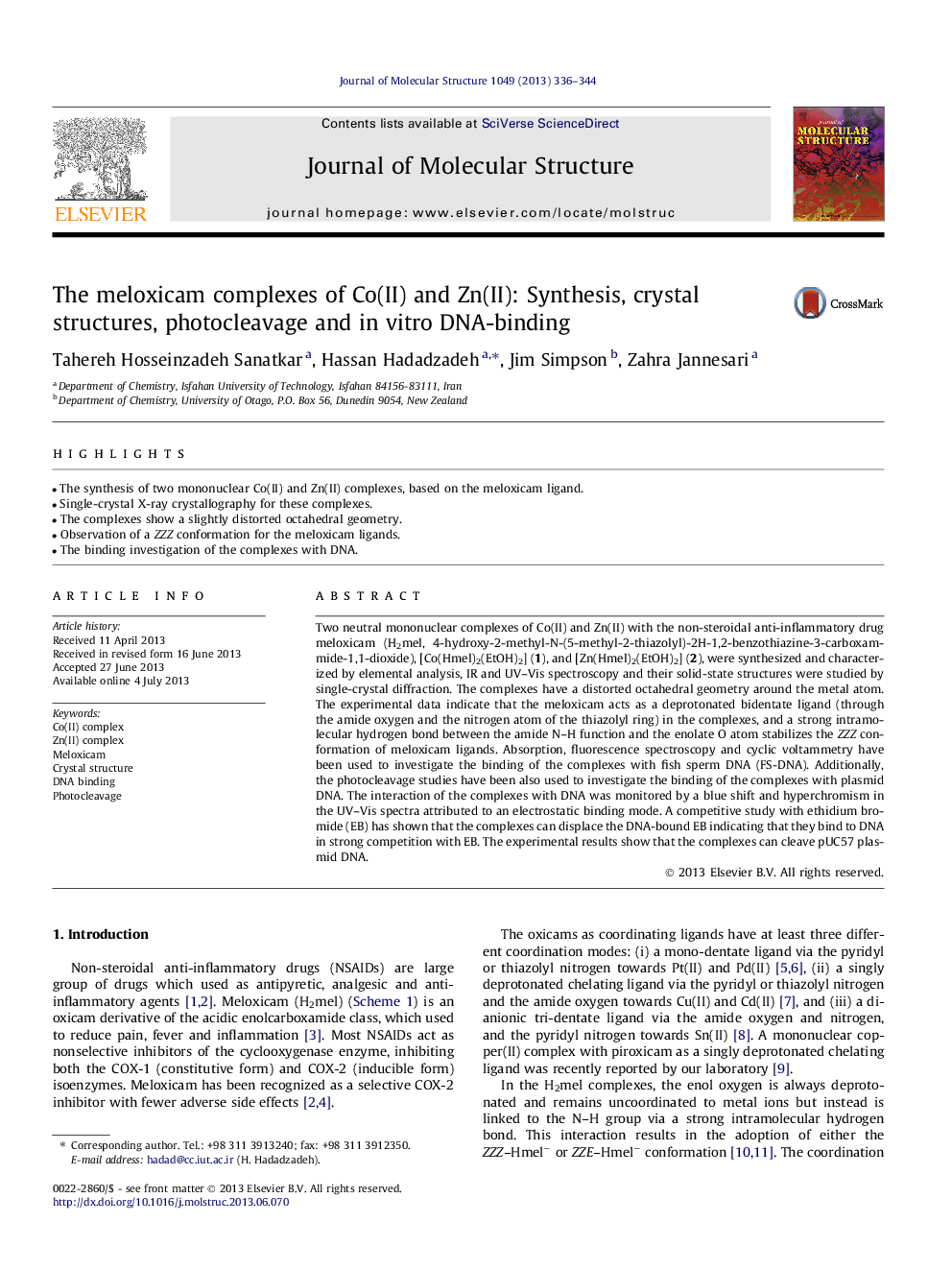| Article ID | Journal | Published Year | Pages | File Type |
|---|---|---|---|---|
| 7810546 | Journal of Molecular Structure | 2013 | 9 Pages |
Abstract
Two neutral mononuclear complexes of Co(II) and Zn(II) with the non-steroidal anti-inflammatory drug meloxicam (H2mel, 4-hydroxy-2-methyl-N-(5-methyl-2-thiazolyl)-2H-1,2-benzothiazine-3-carboxammide-1,1-dioxide), [Co(Hmel)2(EtOH)2] (1), and [Zn(Hmel)2(EtOH)2] (2), were synthesized and characterized by elemental analysis, IR and UV-Vis spectroscopy and their solid-state structures were studied by single-crystal diffraction. The complexes have a distorted octahedral geometry around the metal atom. The experimental data indicate that the meloxicam acts as a deprotonated bidentate ligand (through the amide oxygen and the nitrogen atom of the thiazolyl ring) in the complexes, and a strong intramolecular hydrogen bond between the amide N-H function and the enolate O atom stabilizes the ZZZ conformation of meloxicam ligands. Absorption, fluorescence spectroscopy and cyclic voltammetry have been used to investigate the binding of the complexes with fish sperm DNA (FS-DNA). Additionally, the photocleavage studies have been also used to investigate the binding of the complexes with plasmid DNA. The interaction of the complexes with DNA was monitored by a blue shift and hyperchromism in the UV-Vis spectra attributed to an electrostatic binding mode. A competitive study with ethidium bromide (EB) has shown that the complexes can displace the DNA-bound EB indicating that they bind to DNA in strong competition with EB. The experimental results show that the complexes can cleave pUC57 plasmid DNA.
Related Topics
Physical Sciences and Engineering
Chemistry
Organic Chemistry
Authors
Tahereh Hosseinzadeh Sanatkar, Hassan Hadadzadeh, Jim Simpson, Zahra Jannesari,
